Pol Roger Sir Winston Churchill 2008 Champagne: Harvested To The Sound Of Gunfire; Drunk To The Sound Of Trumpets – Then And Now
by Ken Gargett
Not another champagne from 2008? Absolutely!
By now it may be obvious that I am a huge fan of the 2008 vintage champagne. For me, the best since 1988 (and I know that will cause serious mumblings among many champagne lovers). Nineteen eighty-eight is a wonderful year and 2008 is very similar – the champagnes are classical, elegant, refined, focused, long-lived, and very often spectacular wines.
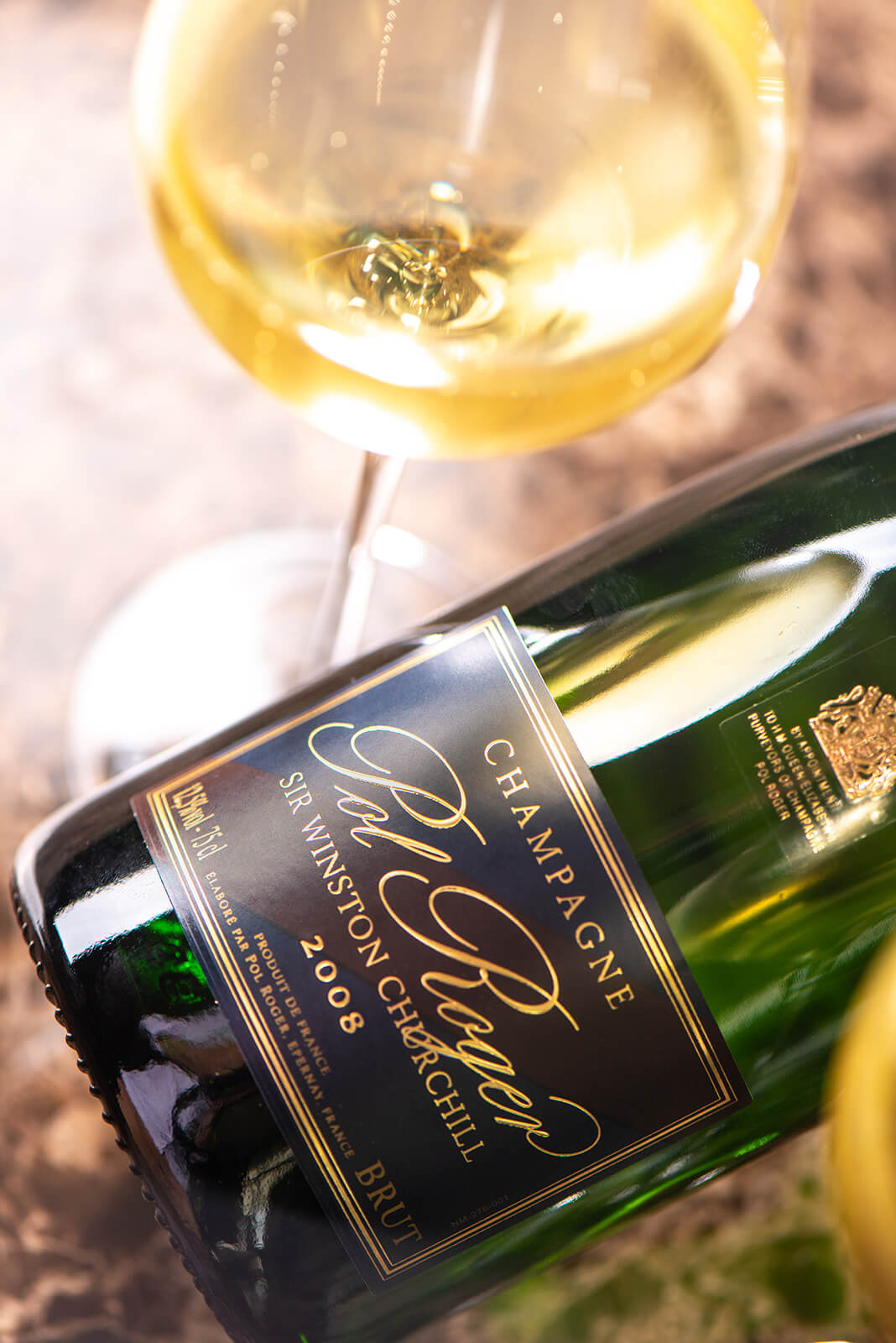
Pol Roger Sir Winston Churchill 2008 champagne
If we go back in time to 1988, it was greeted with much appreciation by champagne lovers as, aside from some decent ’86s, the previous great year was 1985, though it was a very small vintage. Before that, 1982 was a star (the focus was very much on Chardonnay, whereas 1985 was a Pinot-dominant year) and had yielded a much higher volume.
Nineteen eighty-eight, however, did not have the spotlight for long. The warm, approachable, immediately generous wines of 1989 took over (1988 was the antithesis of this style). Then came the nearly legendary 1990s.
My first visit to the Champagne region was in 1993 and makers were extolling the glories of 1990 like few before it. They ranked 1989 a notch behind it and 1988 brought up the rear of this amazing trio of great years – until the recent influence of climate change, it was extremely rare to see two consecutive vintages universally declared, let alone three.
Subsequent visits saw a changing of the guard, as it were: 1988 slowly overtook the reputation of 1989, though 1990 reigned supreme. Eventually, for many, 1988 came out of its shell and ranked if not first then at least alongside 1990. Now, for me, time has declared 1988 as the clear winner. Expect 2008 to emerge from a plethora of fine years – 2012, 2004, 2002, and possibly even 2018, though too soon to tell there – as the greatest vintage we have yet seen this century.
There are still numerous examples available. Putting them away in your cellar will yield untold rewards in the years to come.
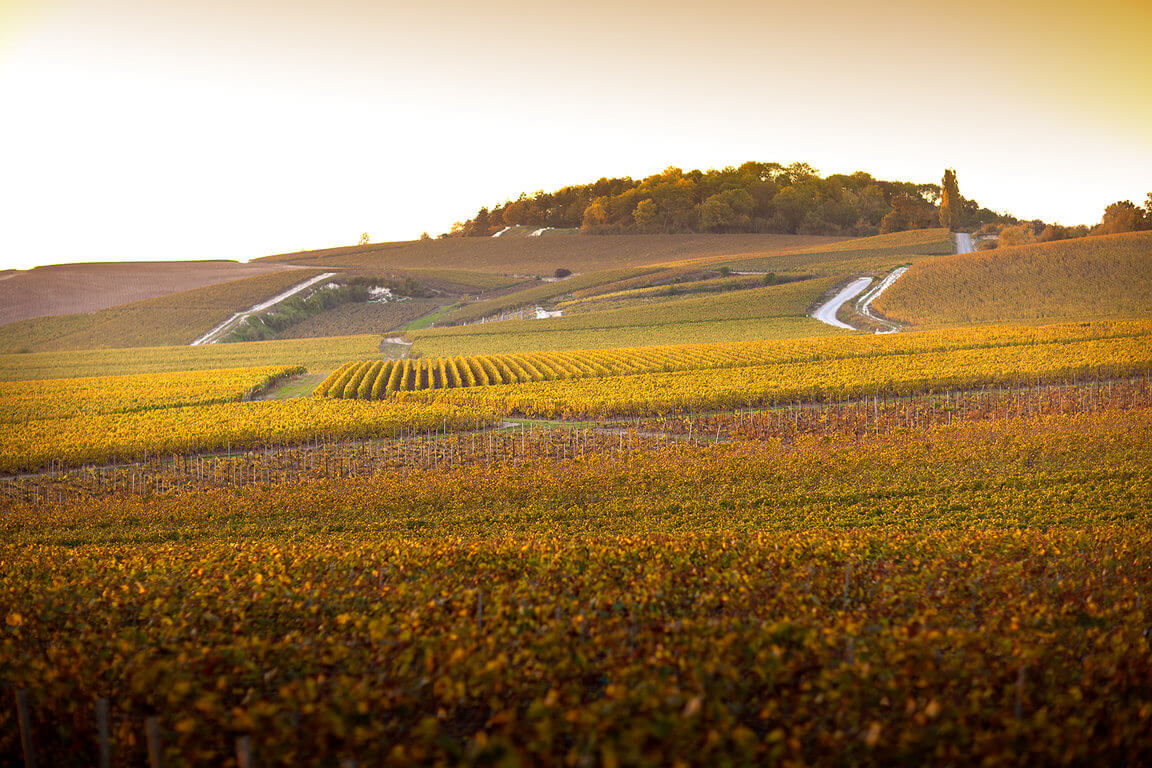
Pol Roger vineyards in Champagne
But first, a story
The Pol Roger Sir Winston Churchill 2008 has been around for the best part of a year but is still reasonably widely available (AUD$350). The story of this prestige cuvee was told when we looked at the 2006, so I will not repeat it here. It does, however, provide an opportunity to look at one of the amazing stories that the Champagne region to throws up so often.
Cast your thoughts back to the very different world that existed in 1900. Puccini’s Tosca had just debuted in Rome; Australia as we know it did not even exist, with Federation not coming until the following year; the Boxer Rebellion took place; the Boer War was in full swing; Queen Victoria was on the British throne; the second Olympic Games took place in Paris; the Zeppelin made its inaugural flight; and U.S. President William McKinley was re-elected, just about a year before his assassination.
In Champagne, the house of Pol Roger was recovering from the passing of the man himself, Pol Roger, who established it in 1849. He passed from pneumonia in December 1899. His sons, Maurice, aged 30, and Georges, aged 26, had taken over. Before they could take a breath, Pol Roger suffered a tragedy that would have destroyed most businesses.
At 2:00 am on the morning of February 23, Maurice was woken by the sound of “extreme thunder.” There had been a great deal of rain in the early part of that year, so he turned over and went back to sleep. Two hours later, he was woken again by a deafening crash, which he described as, and originally believed was, the sound of two trains colliding.
Maurice immediately went outside and was met by an unimaginable sight: the three-story facility had literally disappeared into a giant hole, disintegrating some thirty meters into the ground – many parts of the Champagne region have famous underground cellars and those at Pol Roger had collapsed.

Pol Roger’s underground cellars collapsed in 1900
The house, which was one of the three largest in the region at the time, had lost 500 barrels of champagne and 1.5 million bottles. Fortunately, as this happened in the middle of the night, no one was in the facility and there were no injuries. Before any serious work could be done to recover what might have survived, there was a further collapse nearby. The site was deemed too dangerous and sealed off. The barrels and bottles were lost, presumably for all time. I have never been able to ascertain if the original thunder Maurice heard was an initial collapse or actually thunder.
Over time, the site became a vegetable patch.
A few years ago, Pol Roger decided it was time to use the site and devised plans for a 20,000 square meter packaging and labeling facility. Naturally, work needed to be done to ascertain what would be required to make any repairs to the site. It was not long before a large quantity of broken glass was discovered – no surprise there!
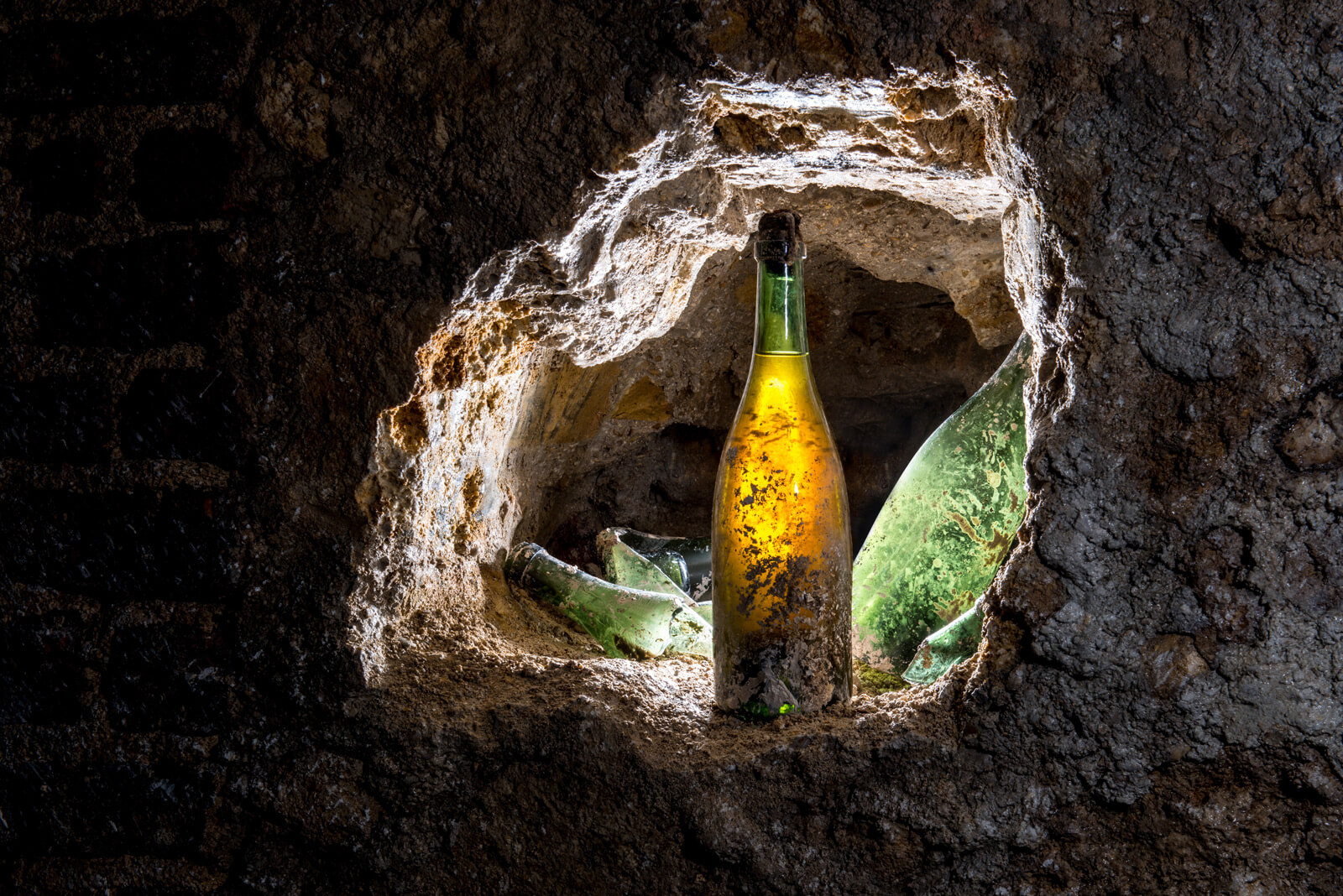
Treasure found after the 1900 collapse of the Pol Roger underground cellars
And then workers found an intact bottle. Of course, these bottles had not been labeled at the time of the disaster so what it might be was speculation . The managing director, Laurent d’Harcourt, guessed that they could be from the 1870s, 1880s or 1890s, but as champagne spent less time in the cellars before sale, he thought there was a good chance they could be 1898 or even the highly regarded 1892.
Over the next three days, another 25 intact bottles were unearthed, but rising water and the potential of further collapses put a halt to proceedings. Over the next year, more bottles were gradually found, almost 100 in total, but the danger of collapse became imminent and the search for anything further has ceased, I believe for good.
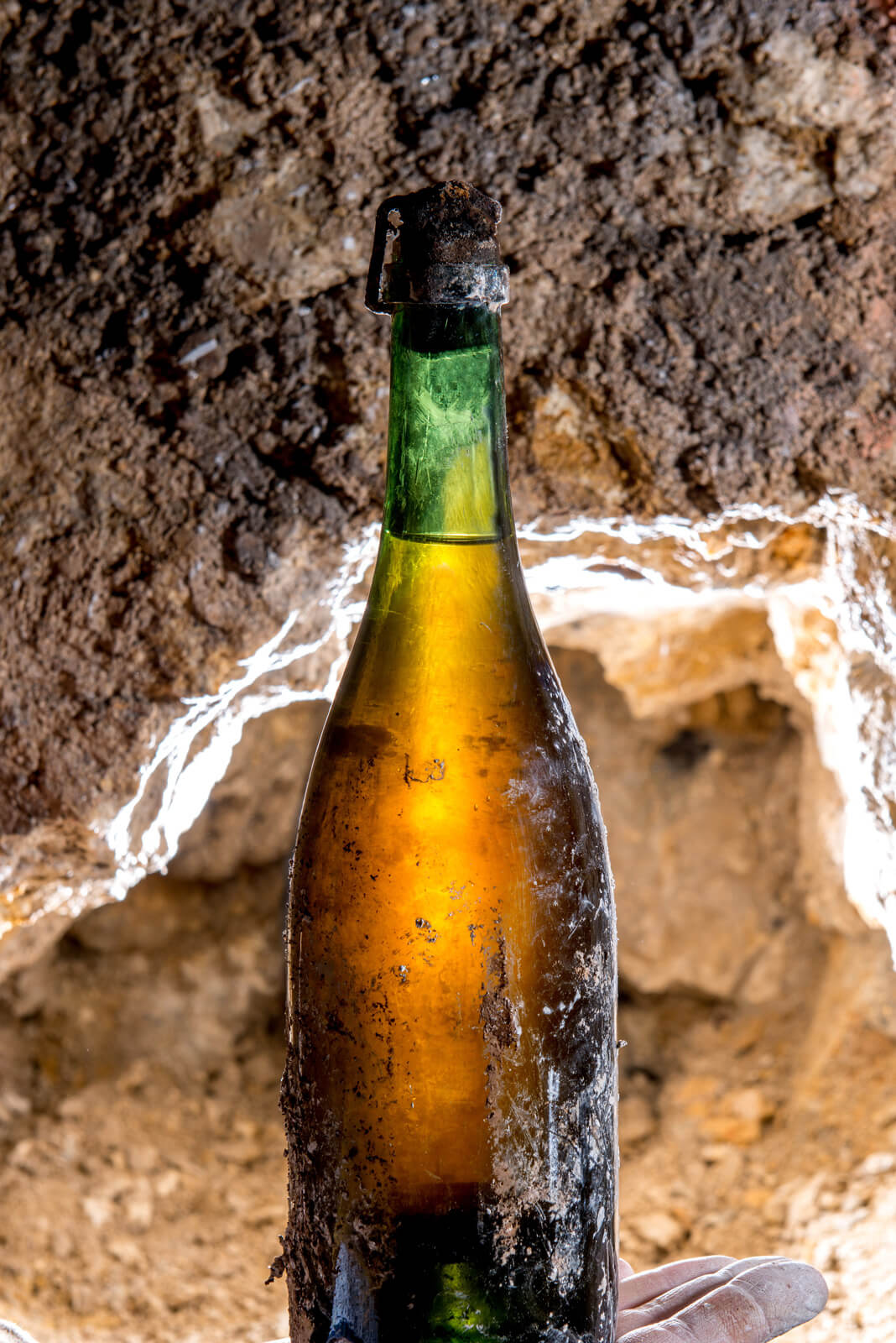
Buried treasure found after the 1900 collapse of the Pol Roger underground cellars
A few months ago, it was time to open a bottle and see how it had held up. Now, I would love to provide you with tasting notes from that, but I was not one of the fortunate few to attend the event.
They decided to open not one but two of these priceless treasures.
The first was revealed as an 1897; the second from 1895. There are notes on both that are not difficult to track down on the internet – a bit eerily, the notes are almost identical (I have been to hundreds, maybe thousands, of tastings and it is rare to see such uniformity in descriptors), but no matter.
The 1895 was the star of the two, in glorious form and even with the merest hint of fizz. It had a much longer cork than the 1897, but that is not an uncommon occurrence in older vintages. The wines were both around 13 percent alcohol, pH of 3.2, and with a dosage of approximately 13 to 14 grams/liter. That was surprising to me as many champagnes of that era were of a much higher dosage. The famous Baltic Sea Heidsieck 1907, which we looked at some time ago, was estimated to be from 100 to 165 grams.
There is a wonderful symmetry in the second wine being revealed as 1895 – it was the first vintage of Pol Roger that Churchill ordered (for those who like such trivia, this was also the year in which Oscar Wilde’s The Importance of Being Ernest made its debut on the London stage).
The firm was able to re-establish itself after much hard work and support from other producers. Moët lent workers to help; other producers supported dinners featuring Pol Roger champagnes; Mercier purchased all the empty bottles that would not be needed; and firms that had bought sur latte from Pol Roger sold the wines back so they had stock. This was also the time the two sons petitioned the president of France to change their surname from Roger to Pol Roger in honor of their father.
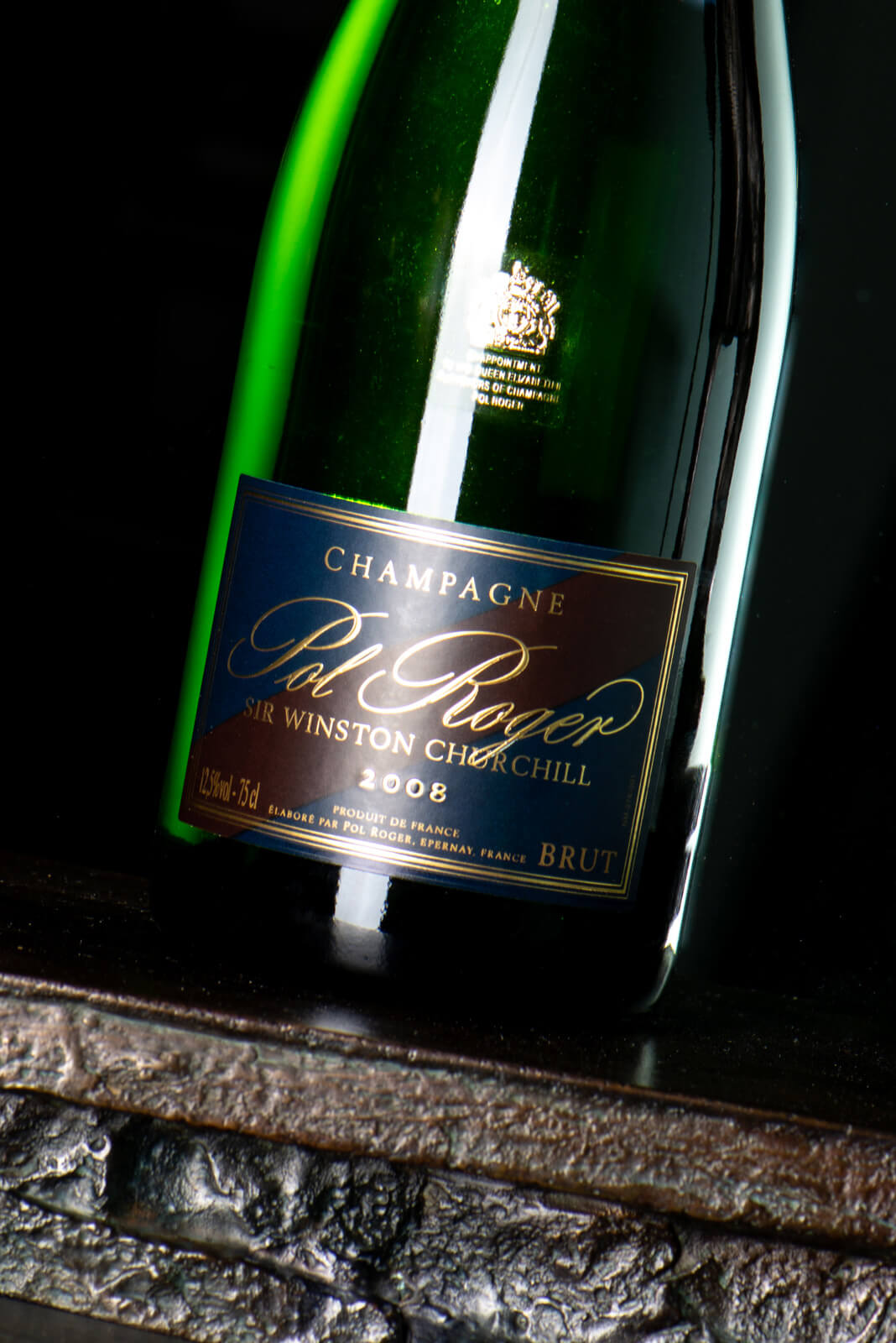
Pol Roger Sir Winston Churchill 2008 champagne
Pol Roger Sir Winston Churchill 2008: tasting notes
Back to the Sir Winston Churchill 2008. A wonderfully concentrated champagne of great depth. The ten years it has spent on lees has imbued it with extraordinary complexity.
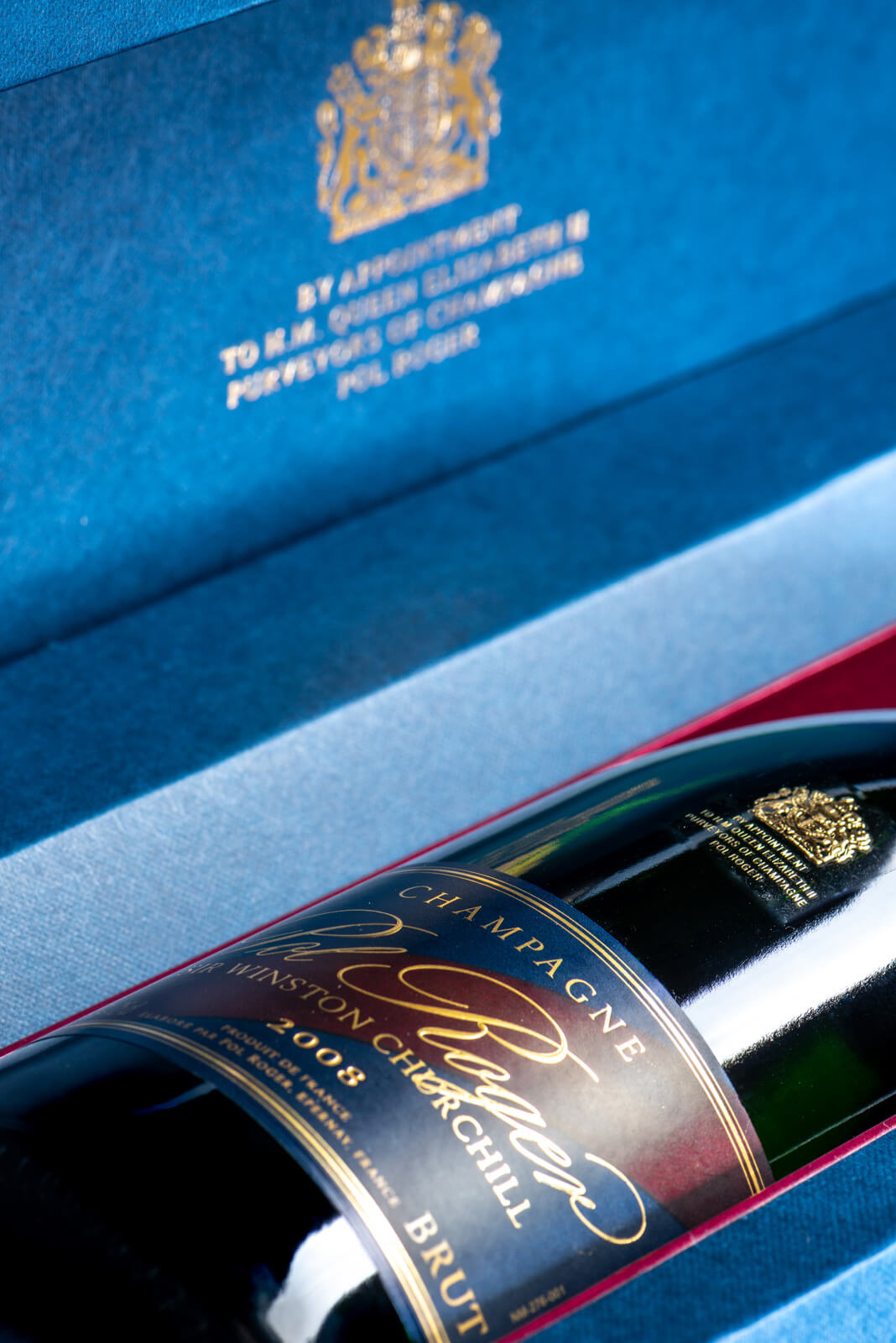
Pol Roger Sir Winston Churchill 2008 champagne
Hazelnuts, spices, lemon rind, grapefruit, and a hint of brioche. A steel spine and incredible length. It has amazing structure and will undoubtedly age and improve for decades. There is bite and grip here, not unlike slightly unripe raspberries. And finally, hints of honey. For me, 98. Glorious.
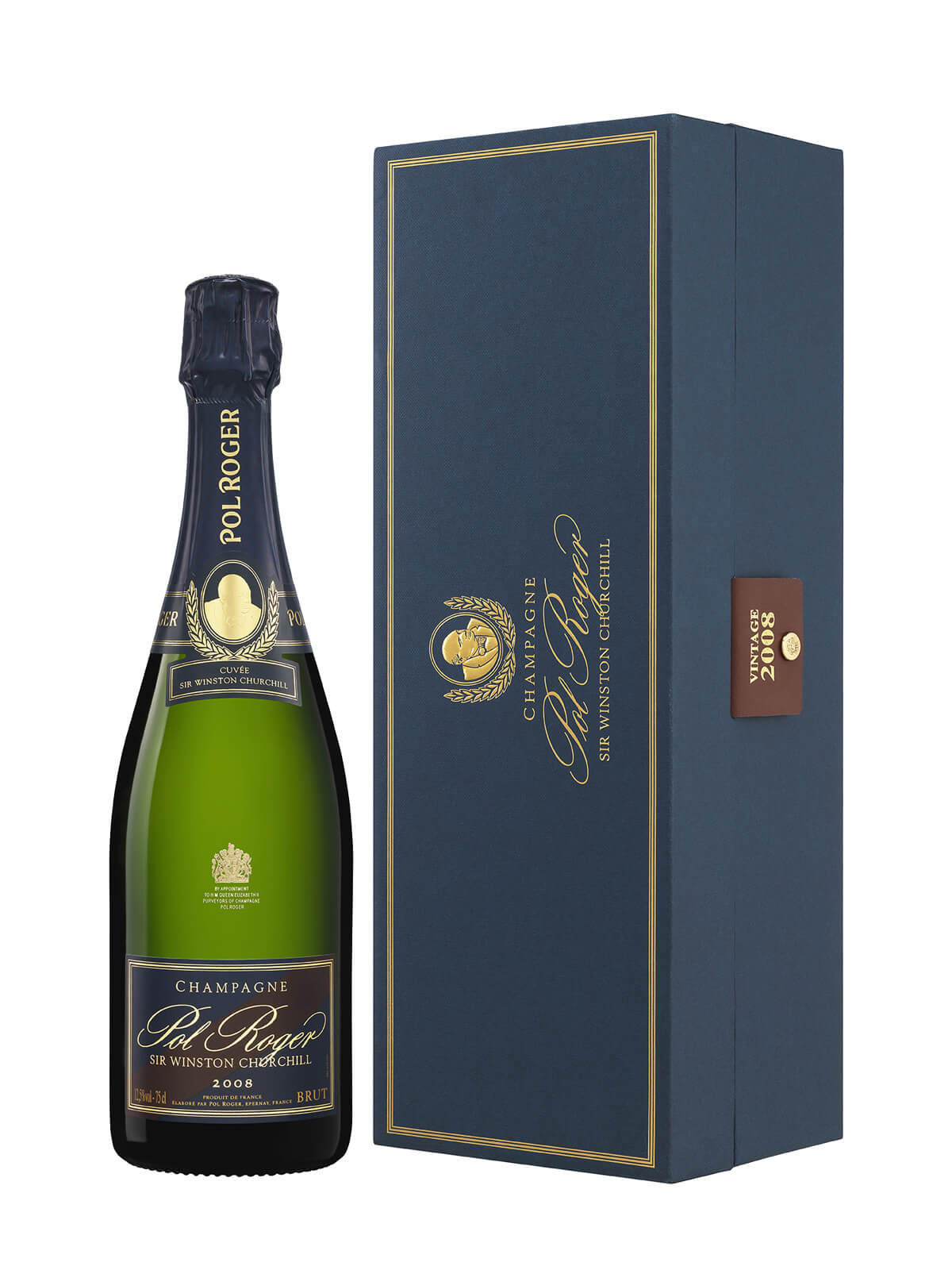
Pol Roger Sir Winston Churchill 2008 champagne
And if I may return to Maurice for a final thought, there are many great quotes about champagne, a number from Churchill himself, but Maurice said of the 1914 (we are talking about old champagnes so it seems appropriate), “It was harvested to the sound of gunfire; it is drunk to the sound of trumpets.”
For more information, please visit www.polroger.com/en/champagnes/4/cuvee-sir-winston-churchill.
You may also enjoy:
Pol Roger Cuvée Sir Winston Churchill 2006: From A Long And Complex History
Pol Roger 2012 Champagnes: Grand Releases For Perhaps The Grandest Vintage
Dom Pérignon 2008: From The Monk’s Earliest Beginnings To The Most Glorious Champagne Vintage
Bollinger 2008 La Grande Année Champagne: Still Young, But Already A Classic
Louis Roederer Cristal 2008: Supreme Elegance And Ethereal Grace
Leave a Reply
Want to join the discussion?Feel free to contribute!


Good read, thanks!
May I add: the one thing better than a 2008 Winston Churchill is a magnum of the same….
Alex, thanks for the thoughts. By chance, had the opportunity to try it again last night against a 2008 Dom. Both stunning. The Dom finer, the Pol richer. The only time i have seen the 2008 Sir Winston from magnum, it was a little disappointing. A bit dull. You can be unlucky. 99% of the time i would absolutely agree with you. Hope you’ve had better luck.
Yes, we did have better luck, I believe … hence my comment.
Magnums do take more time, so a few more years in the cellar may be warranted. I’ll update you in ten years or so…